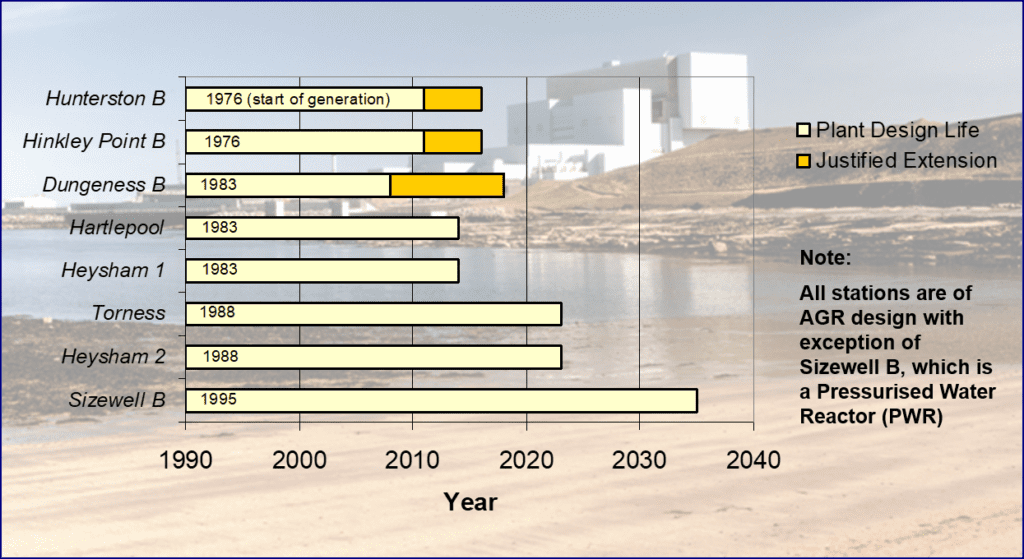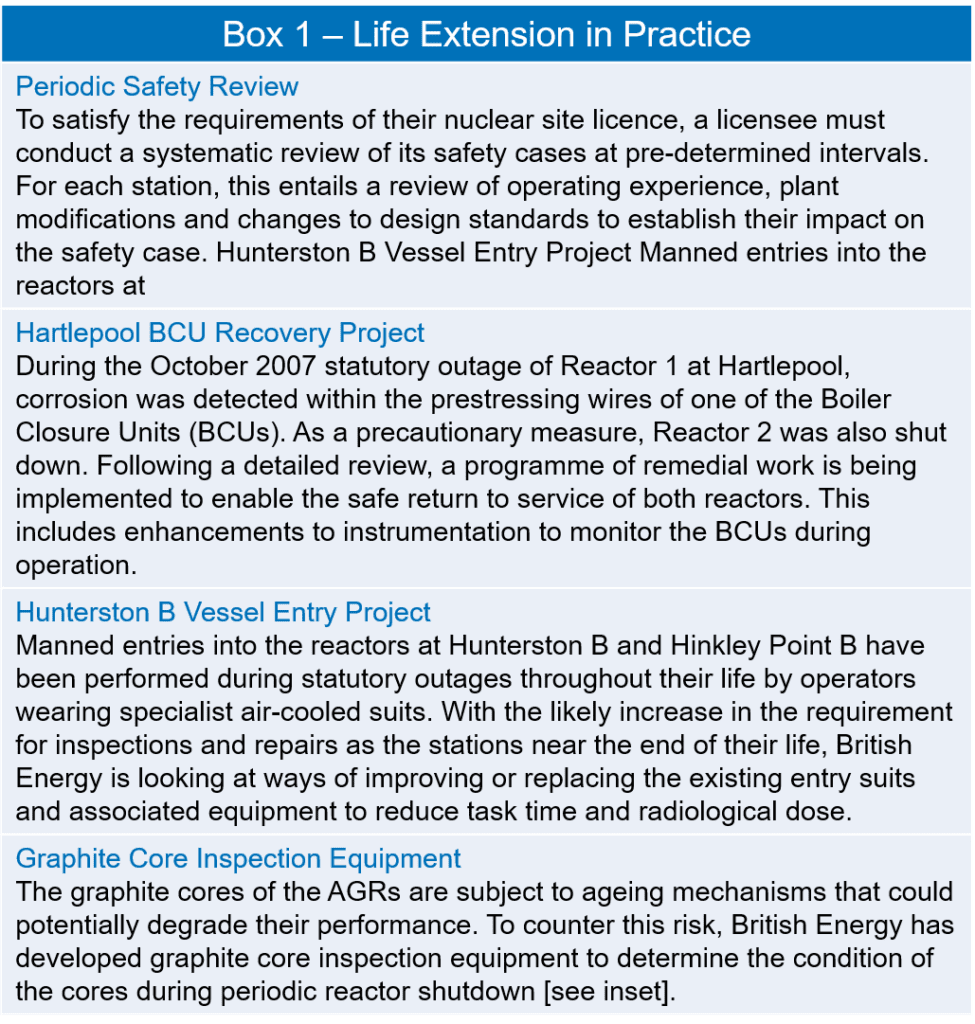Nuclear life extension – bridging the energy gap
Whilst the construction of new nuclear power stations in the UK is looking increasingly likely, it will be 2018 at the very earliest before they start to generate electricity. Meanwhile, many of the UK’s existing nuclear power stations are reaching the end of their design life, potentially leaving an energy gap of over 10% of the nation’s electricity demand. One solution to this problem is to extend the lives of the existing nuclear power stations, particularly British Energy’s ageing fleet of 7 Advanced Gas Cooled Reactor (AGR) stations, one of which is already operating within a justified life extension [see Fig 1].

Figure 1 – Remaining Life of British Energy Nuclear Power Stations
This presents an interesting challenge for British Energy. Ageing plant generally needs more care and attention to ensure it operates safely and reliably. Unforeseen issues may be identified through rigorous surveillance. Refurbishment or replacement of certain systems and components, some of which may be obsolete, may be required to overcome age related problems. Compounding these challenges, continued safe operation must be assessed against current standards, which have evolved significantly over the stations’ operating lives.
Not surprisingly, the As Low As Reasonable Practicable (ALARP) principle plays a pivotal role in the justification of life extension, because the stations were not originally designed with current standards in mind. The aim, therefore, is to target the more significant risks where improvements will deliver the most benefit, so that overall risk is reduced so far as is reasonably practicable.
To deliver this aim British Energy manages a range of diverse projects with the common goal of demonstrating continued safe operation of the AGRs. Box 1 illustrates Risktec’s involvement.

This article first appeared in RISKworld Issue 14.






